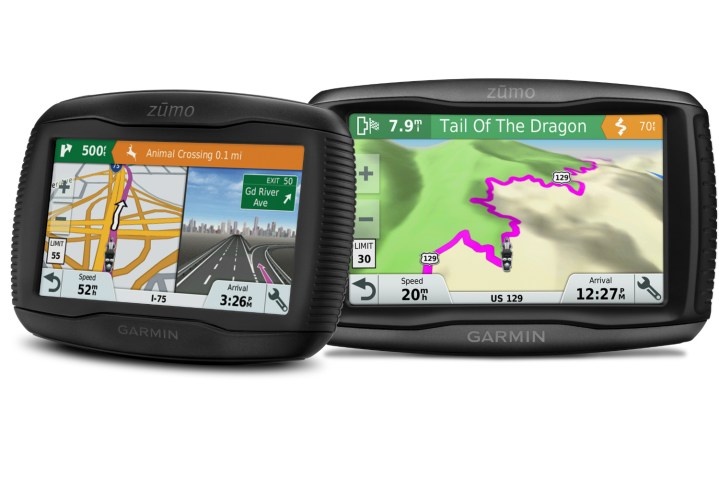
Garmin’s zumo 395LM and 595LM motorcycle navigation units are glove-friendly, tough, and weatherproofed against UV rays, bad weather, and even fuel vapors. The touchscreen displays of the 395 (4.3 inches) and the 595 (high-res 5-inch) are built to enhance visibility in direct sunlight.
Related: ‘Grizzly’ will take his Victory around the world starting from Daytona Bike Week
Both devices include lifetime map6 updates for North America, and can point you to repair stations, dealers, and other points of interest. There is space to log your service history and keep maintenance records. The Dynamic Fuel Stops feature suggests when to top off by calculating the distance you’ve traveled.
With Roundtrip Routing, you can plan your route based on time, distance, or location. Preloaded Foursquare data offers countless destinations to explore, while the Real Directions features guides riders using landmarks and traffic lights. If you like the twisties, you can set the GPS to take you through curves and hills while limiting the use of major highways.
You can never be too safe astride a motorbike, so both zumo models include rider alerts to keep you apprised of the environment around you. You can be notified when a sharp curve is coming up; red lights, speed cameras, and animal crossings can also be anticipated before you might otherwise notice them. When crossing state lines, you will be reminded of local state laws regarding helmet use.
The updated zumo series is compatible with Garmin’s VIRB action cameras, which you can control from the display screen. You can also monitor your tire pressure with the optional Tire Pressure Monitor Sensor system.
If you like to cruise along to your tunes, you can sync your smartphone or any other portable MP3 device and control it from the zumo. The 595 can stream music from popular services such as Spotify and Pandora directly to a headset or compatible helmet (you can also make and receive calls via spoken directions).
“What’s exciting about the new zumo models is that they are designed to find those adventurous winding roads that riders typically crave,” said Dan Bartel, Garmin vice president of worldwide sales. “The ability to stream Spotify music will also enhance the thrill of every ride.”
The zumo 395LM retails for $600, while the 595LM goes for $900. They are expected to be available by April. For more information, visit the official site.


